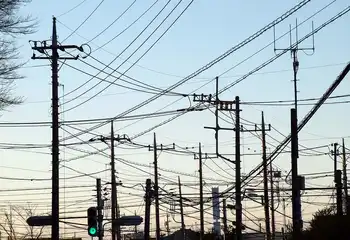Pilot project will see energy-efficient bulbs in streetlights
By Cobourg Daily Star
NFPA 70b Training - Electrical Maintenance
Our customized live online or in‑person group training can be delivered to your staff at your location.

- Live Online
- 12 hours Instructor-led
- Group Training Available
The new "induction lighting" system will garner attention for the community, save energy, be good for the environment and save money, he told those attending a surprise announcement in his Victoria Hall office recently.
The mayor made his announcement as the town is readying itself to participate in this Saturday's Earth Hour (March 29, 8 to 9.m.) lights off/energy reduction challenge with Port Hope, part of the worldwide event to draw attention to climate change.
Energy-saving lighting manufacturer Luxlite approached Cobourg Networks Inc., a town-controlled utility company, asking if it would take part in a pilot project for its energy-saving lights, Mr. Delanty said. That was last fall. The project was researched and town councillors attended a Cobourg Networks Inc. meeting to hear details.
"Cobourg has agreed, in principle, to take an extraordinary step in changing the lighting in all 2,395 of the town's street lights from the energy-heating, high-pressure sodium lights to the new induction lighting system," according to the mayor's release.
Cobourg Networks Inc., the retail arm of Lakefront Utilities, will foot the estimated conversion cost of about $1.25-million and the Town of Cobourg will repay it at the rate of about $205,000 yearly - which is about what the town is now spending on energy costs and maintaining its streetlights, according to an interview and report from town treasurer Ian Davey.
An analysis of replacing the town's streetlight system at one time versus over a period of years was costed out and Mr. Davey's report states: "The final analysis suggests that the alternative of replacing the entire system with new technology in 2008 would result in approximate savings of $1.3-million over the next 20 years - or annual savings of $65,000."
It would also cut energy costs in half, eliminate maintenance costs for the first five years and reduce them in future years and provide more predictable budgeting, Mr. Davey predicts.
"This is a significant step in conserving energy and improving the environment," Cobourg Networks Inc. board member John Farrell said. The positive impact on the environment is "central to the proposal" he stressed.
Cobourg is taking a leadership role, Mr. Farrell added.
Mr. Delanty said that the time was right for this project.
"Many of our streetlights are past their life span and need to be replaced," he said.
The town has been replacing light fixtures on a previous program, but not with the energy-saving technology of induction lighting. Lakeshore Utilities Inc. president Bruce Craig said the lights have such a long life because there are no contacts to wear out. They also provide white light, "so you can see better."
The results is twice the light for half the energy cost.
Luxlite will be providing the light fixture and the bulb. One is already installed on King Street across from St. Peter's Anglican Church, and can be readily identified by the white light it emits at night, those gathered in the mayor's officer were told.
Luxlite provided lighting for the Lake City Winter Olympics and the Vancouver Winter Games, the mayor said.
Its sales director, Arthur Hossain, said his company became aware of Cobourg's potential as a pilot street-lighting project for their product because Luxlite sales associate Wayne Helmer has lived in Cobourg for 35 years. He was "passionate" Luxlite should do something for his town, Mr. Hossain said.
Cobourg's decision to change all its street lighting and go green with Luxlite technology will be showcased on the company's Web site providing positive exposure for the town, he said.
While the estimated cost to change 2,395 of the town's streetlights (including heritage lighting conversions) to Luxlite fixtures and bulbs is $1.25-million, the actual cost is twice that, Mr. Hossain said. Asked about payment, he said the company is still working out the details.
"We're very flexible," he said.











